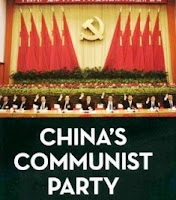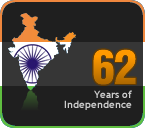 Walk into a local restaurant in Guangzhou and you are warmly welcomed in by pretty girls of the same physical proportion in long Chinese dresses or in western casual t-shirts and jeans with the restaurant’s name and logo on their t-shirts that are all of identical color and size. With a bow they walk you over to your seat and leave a signed pad with various columns where orders are kep tabs on.The order is then beamed back via a handheld electronic touch screen device and the table mapped to the order. The order is taken by the chef in the kitchen with another handheld and replied back for service once ready. A hot bowl of Chinese tea is placed promptly in front of you once you are seated comfortably and served into small tea cups with elan followed by a smile and a polite gesture to go ahead and enjoy the tea. A pack of paper napkins and a set of chopsticks either wooden or enamel is placed along with a set of bowls and saucers encased in air tight polythene sheets post washing and sterilization( lessons learnt from SARS, I suppose)
Walk into a local restaurant in Guangzhou and you are warmly welcomed in by pretty girls of the same physical proportion in long Chinese dresses or in western casual t-shirts and jeans with the restaurant’s name and logo on their t-shirts that are all of identical color and size. With a bow they walk you over to your seat and leave a signed pad with various columns where orders are kep tabs on.The order is then beamed back via a handheld electronic touch screen device and the table mapped to the order. The order is taken by the chef in the kitchen with another handheld and replied back for service once ready. A hot bowl of Chinese tea is placed promptly in front of you once you are seated comfortably and served into small tea cups with elan followed by a smile and a polite gesture to go ahead and enjoy the tea. A pack of paper napkins and a set of chopsticks either wooden or enamel is placed along with a set of bowls and saucers encased in air tight polythene sheets post washing and sterilization( lessons learnt from SARS, I suppose)Orders can start with choices of dim sums, starters like tofu, choi-sum, chicken feet, chicken wings, pork knuckles, braised beef etc followed by mi-fan(bowl of rice) and some meat based dish or seafood ( giant sized jumbo lobsters with tentacles and legs et all or Fish (whole parts with head eyes et all). Wine is a common accompaniment for dinner while beer is a common accompaniment for all meals. Dessert is never too sweet and has only a dash of sweetness but invariably delicious. A pair of toothpicks are also left for use post the meal.
All meals are eaten with great fervour, loud conversations and almost at all times accompanied by a smoking cigarette. Baijiu or white liquor is then served in generous measure in shot glasses post dinner. This can be extremely strong (55% a.c) and with a very compelling odour and smell. This is consumed with great passion and at great speeds. I have seen 6 shot glasses being downed by men in a span of 15 minutes. Affluent Chinese drink Cognac, the more expensive ones are more popular. The odd Chinese drink Scotch or other drinks. All men smoke heavily at all places. Some women do. This is followed by a walk along the river or street followed by more green tea to diffuse any ill effects of alcohol. Some indulge in massage of the foot or the whole body in many massage places one can find everywhere.
The Chinese exercise almost at all times, all common walking areas have parks with unsophisticated, easy to use exercise equipment for use by all for free. Tai-chi is commonly practiced by many older citizens along the pavements or by the riverside. Some practice and teach Gong Fu(Kung-fu) along the wayside and women gather in the evening and do Chinese style aerobics to the Chinese tunes blasting out of boom boxes on most parks. I have seen couples swaying to ball dancing tunes, singing Chinese operas and also dancing the samba or the salsa or even the tango in many parks as I walk with my wife along the riverside on the walk ways that wind through the various parks along the riverbank.
Almost all Chinese men look charmingly the same with similar hair-do, same complexion and same physical proportions. Same with women, most women look the same – pretty, with the same skin tone and colour, same hair styles – always long and shiny silky black, same physical proportions. Very difficult to find many teenagers. Very easy to find many babies and many pets (mostly dogs) in all houses. Very easy to find very senior citizens. This is the Chinese way of life in a busy city, the good way of life always.













